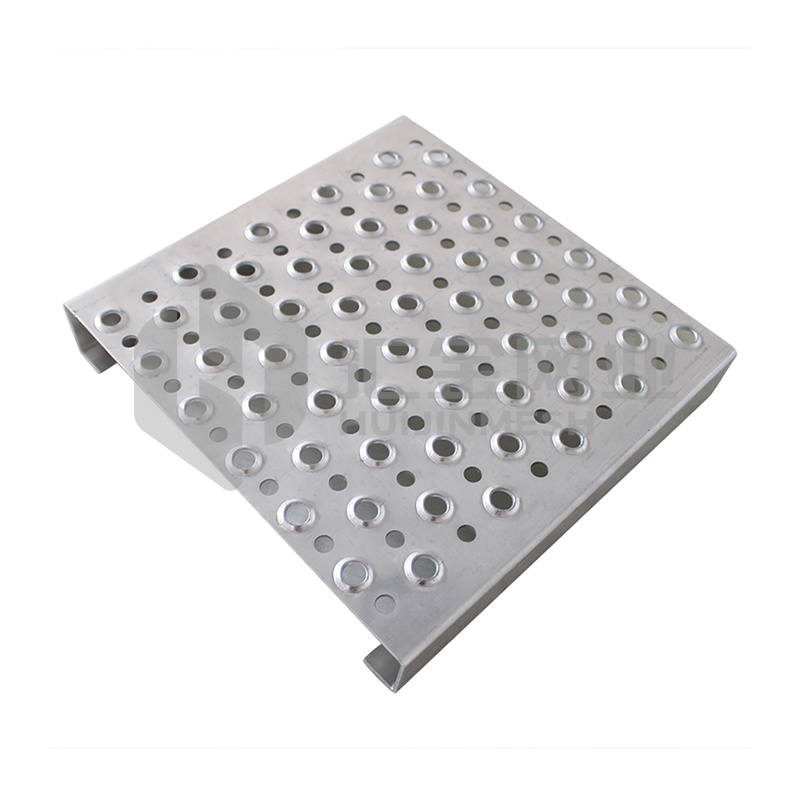
Understanding Quality Traction Tread Grating: Essential Insights for Industry Professionals
May 10,2025
When it comes to construction and decorative materials, quality traction tread grating represents a critical component in ensuring both safety and functionality in various applications. Traction tread grating is designed to provide a slip-resistant surface, making it ideal for walkways, platforms, and other areas where foot traffic is frequent. This article delves into the key aspects associated with quality traction tread grating, offering insights that are vital for professionals in the industry.
First and foremost, the material used in producing traction tread grating plays a crucial role in its overall quality and performance. Common materials include steel, aluminum, and fiberglass, each offering unique benefits. Steel grating is renowned for its strength and durability, making it suitable for heavy-duty applications. On the other hand, aluminum grating is lightweight and resistant to corrosion, making it a preferred choice for environments exposed to moisture. Fiberglass grating, known for its non-conductive properties, is often used in applications where electrical safety is a concern.
Another vital aspect of quality traction tread grating is the design of the tread itself. The tread pattern must be engineered to maximize grip while allowing for efficient drainage. Quality products often feature raised patterns or serrated edges that enhance traction, significantly reducing the risk of slips and falls. Various tread configurations may be available depending on specific application requirements, so it’s essential for professionals to assess their unique needs.
Moreover, the load-bearing capacity of traction tread grating should not be overlooked. This attribute is particularly important in industrial settings where heavy machinery or equipment may be present. Understanding the load rating specifications of different grating types ensures that the selected product will withstand the operational demands it will face.
Maintenance is yet another consideration when evaluating quality traction tread grating. Regular inspections and cleaning can prolong the life of the grating and maintain its slip-resistant properties. Professionals should establish a maintenance schedule, taking into account environmental factors that may affect the grating's performance, such as exposure to chemicals or extreme weather conditions.
In summary, understanding the nuances of quality traction tread grating is essential for professionals within the construction and decorative materials industry. By focusing on the right materials, tread designs, load capacities, and maintenance practices, industry experts can make informed choices that enhance both safety and operational efficiency. Quality traction tread grating not only protects users but also adds value to architectural and industrial projects, making it a pivotal element in modern construction practices.
First and foremost, the material used in producing traction tread grating plays a crucial role in its overall quality and performance. Common materials include steel, aluminum, and fiberglass, each offering unique benefits. Steel grating is renowned for its strength and durability, making it suitable for heavy-duty applications. On the other hand, aluminum grating is lightweight and resistant to corrosion, making it a preferred choice for environments exposed to moisture. Fiberglass grating, known for its non-conductive properties, is often used in applications where electrical safety is a concern.
Another vital aspect of quality traction tread grating is the design of the tread itself. The tread pattern must be engineered to maximize grip while allowing for efficient drainage. Quality products often feature raised patterns or serrated edges that enhance traction, significantly reducing the risk of slips and falls. Various tread configurations may be available depending on specific application requirements, so it’s essential for professionals to assess their unique needs.
Moreover, the load-bearing capacity of traction tread grating should not be overlooked. This attribute is particularly important in industrial settings where heavy machinery or equipment may be present. Understanding the load rating specifications of different grating types ensures that the selected product will withstand the operational demands it will face.
Maintenance is yet another consideration when evaluating quality traction tread grating. Regular inspections and cleaning can prolong the life of the grating and maintain its slip-resistant properties. Professionals should establish a maintenance schedule, taking into account environmental factors that may affect the grating's performance, such as exposure to chemicals or extreme weather conditions.
In summary, understanding the nuances of quality traction tread grating is essential for professionals within the construction and decorative materials industry. By focusing on the right materials, tread designs, load capacities, and maintenance practices, industry experts can make informed choices that enhance both safety and operational efficiency. Quality traction tread grating not only protects users but also adds value to architectural and industrial projects, making it a pivotal element in modern construction practices.






